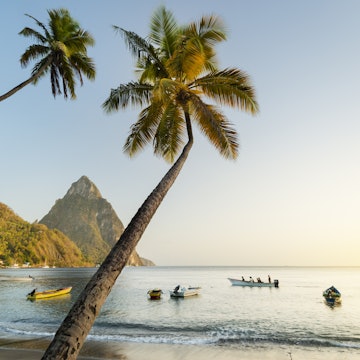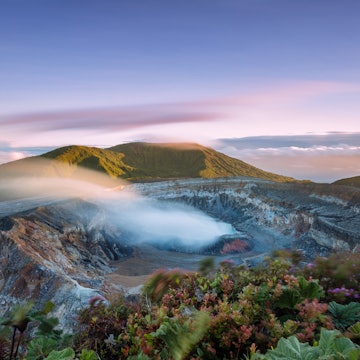
Comida criolla, cocktails and coffee: Puerto Rico’s culinary delights
Sponsored by
May 1, 2023 • 7 min read

From traditional restaurants and creative roadside cafes to trendy bars, the thriving food scene of Puerto Rico has something to offer for every palate. Come discover some of this Island's best eats © Alejandro Granadillo / Lonely Planet
Puerto Rico is a hub of culinary diversity, offering a range of dining experiences as bold as its culture. The Island’s rich history has created a booming food culture that blends Taíno, Spanish, and African traditions with culinary influences from the Americas, Asia, Europe, and beyond.
Come with us as we explore some of the best places to eat and drink in Puerto Rico, highlighting the must-visit eateries shaping the Island’s culinary landscape. From traditional restaurants and creative roadside cafes to trendy bars, the thriving food scene will make your mouth water.

Taste the evolution of comida criolla in San Juan
Comida criolla (creole food) – Puerto Rico’s traditional cuisine – is the result of centuries of blending of Taíno, Spanish, and African traditions and ingredients. There’s no shortage of delicious restaurants serving classic criollo dishes like La Casita Blanca, El Jibarito, or La Alcapurria Quemá. But beyond the traditional eateries, a cadre of San Juan chefs are finding creative ways to evolve and elevate comida criolla by fusing staple recipes with outside influences, supporting local farmers and fishers, and placing local ingredients squarely at the forefront of their menus.
From her vibrant location in Santurce, Chef Natalia Vallejo of Cocina al Fondo transports city dwellers to Puerto Rico’s countryside as she breathes new life into ancestral recipes. The rice with rabbit, catch of the day, and beet terrine are not to be missed. Over at Vianda, run by husband-and-wife team Chef Francis Guzmán and Amelia Dill, the polished seasonal menu both reinterprets the traditional and reinvents international classics, all with local ingredients.
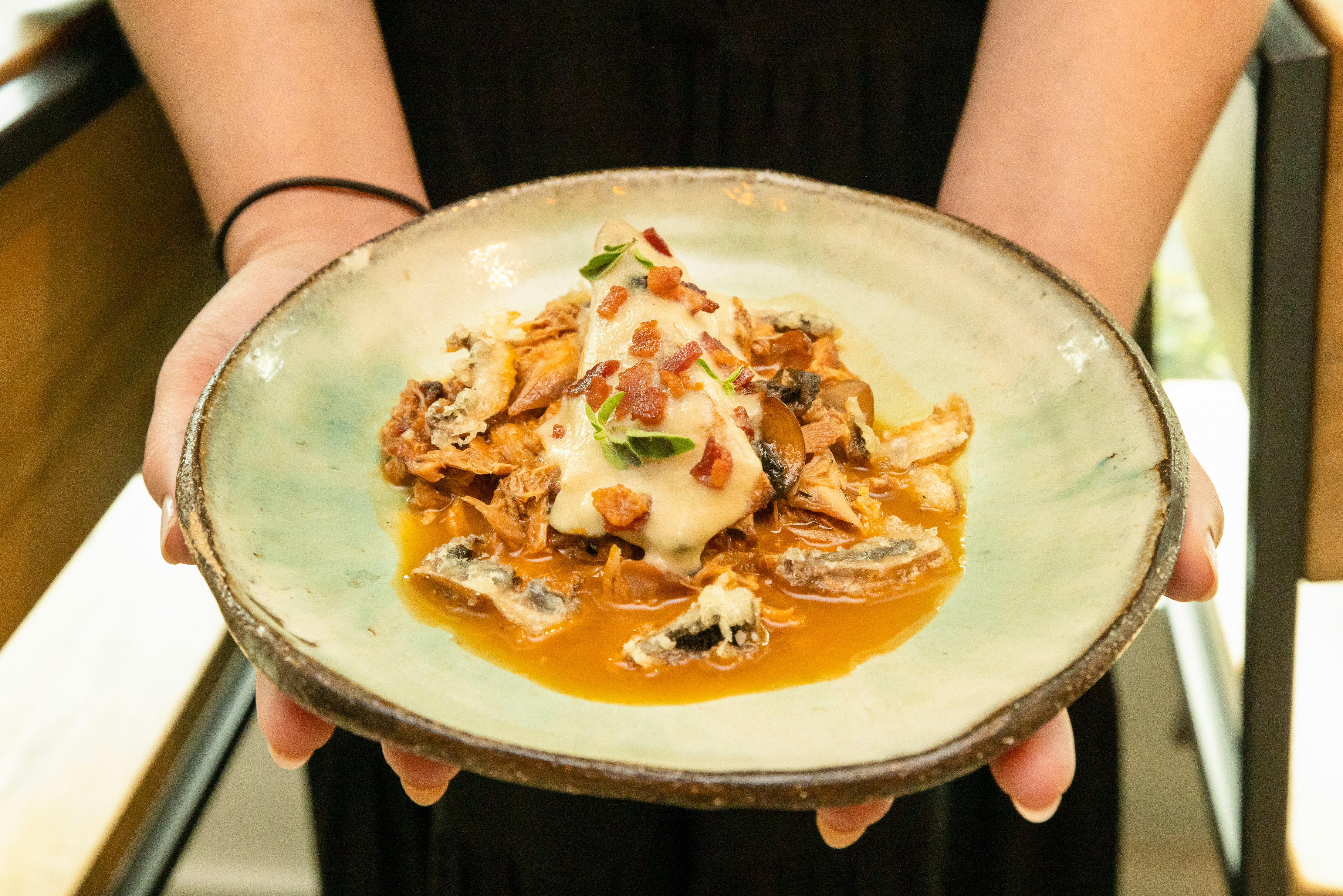
But perhaps no other dining experience is challenging the status quo as much as Oriundo, a monthly pop-up tasting experience. Chef Martin Louzao takes diners on a six-course journey through the forgotten foods of Puerto Rico, to recover the Island's biodiversity by introducing new and old ingredients to Puerto Rico’s cuisine.
Beyond the magnitude of the project’s social and environmental scope, diners will try things here they’ve never tried before and will probably never try again, from heirloom fruits and sea vegetables to invasive seafood species. Tickets sell out quickly but fear not if you’re unable to score a seat – several of the dishes have found their way to the regular menu at Cocina Abierta.

Try world-famous lechón
Lechón consists of an expertly seasoned whole pig that is slow-roasted until it’s fall-apart tender, juicy, and flavorful. It’s one of Puerto Rico’s most emblematic dishes, and the best place to find it is in Guavate. Dubbed Puerto Rico’s “Pork Highway,” this winding mountain road is lined with lechoneras, or open-air roasteries with casual and lively atmosphere.

On weekends, hordes of locals queue up to order cafeteria-style and enjoy their food at the communal tables. Don’t miss out on the sides – equally important and delicious – like arroz con gandules (rice and pigeon peas), morcilla (blood sausage), and amarillos (sweet plantains). Tried and true favorites include El Rancho Original and Lechonera Los Pinos. More modern venues like Casita Guavate offer made-to-order options and strong cocktails like the passion fruit mojito.
If you’re pressed for time, Rancho de Apa in Guaynabo is closer to San Juan. Just be sure to arrive early, the lechón is usually sold out by noon.

Get your fill of local fritters
Most countries have a staple savory stuffed dough (think gyozas, tamales, empanadas, pierogies, etc.), and Puerto Rico is no exception. Locals delight in all kinds of stuffed and fried turnovers known as frituras. The popular alcapurria, made by grating green bananas and yautía (a root vegetable similar to a yam) into a dough, gets its distinct yellow color from achiote (annatto seed). Traditional fillings include stewed ground beef or jueyes (blue land crabs) but in the beachside shacks in Piñones, where clients line up for hours, you can try made-to-order lobster alcapurrias at Kiosko El Boricua, or alcapurrias made with yuca (cassava) at Donde Olga.
The most ubiquitous fritura, however, is the empanadilla or pastelillo. These crescent-shaped turnovers are made from wheat flour and can be found on menus of fine dining establishments and roadside food trucks. There’s a heated debate as to which is which, but for the most part, pastelillos are yellow with edges sealed with a fork, while empanadillas are white and have hand-braided edges. Explore the variety on offer across the Island: rabbit empanadillas at Los Almendros in Guaynabo, pizza empanadillas at El Gordo’s in Cataño, foot-long pastelillos at La Casa de Los Pastelillos in Guayama, or seafood pastelillos at El Triángulo in Guayama.
Pro tip: ask for the pique, local speak for hot sauce. Most places have their proprietary recipe of hot peppers marinated in a mix of oil, vinegar, and seasonings.

Venture off the beaten path of Puerto Rican cuisine
While most visitors stick to the traditional staples of comida criolla, there are several lesser known but no less delicious, Puerto Rican specialties. El Brindis del Bohemio is home to one of Puerto Rico’s best-kept secrets: pastelillos de mantarraya. For more than 20, years they’ve been serving stewed manta ray fritters. The texture resembles juicy pulled chicken, enveloped in a perfectly flaky, yellow crust.
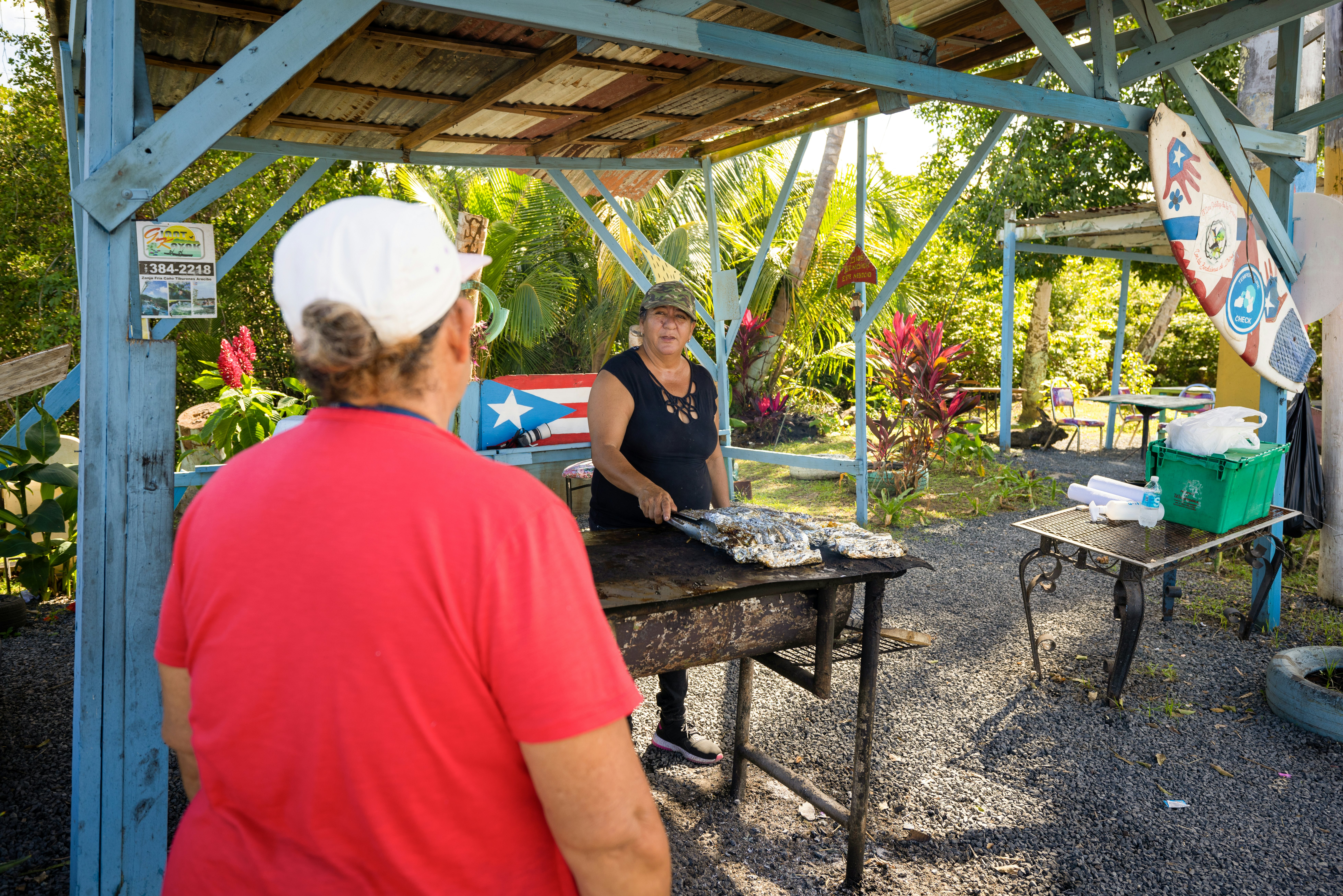
A short drive down the road is El Nuevo Guayabo, known for its empanadas de ceti. Empanadas may be a misnomer; these are more akin to the Puerto Rican pastel or Central American tamal, with dough made from green bananas and pumpkin. Stuffed with stewed ceti (a tiny, transparent fish native to the region), wrapped in banana leaves, and roasted on the grill, the result is lightly charred and smoky. Guanimes, made with cornmeal coconut milk, are like corn dumplings or hallacas and are often topped with stewed cod. You can order them at Lechonera El Cuñao and Méson de Melquíades in Cayey, or Casa Vieja in Ciales.

Savor hand-crafted cocktails
Puerto Rico has a long history of cocktail making. The Island is home to several local and international rum distilleries, and the piña colada was famously invented here in the 1950s. Today’s expert mixologists are riffing off classic cocktails and inventing concoctions all their own.
When La Factoría opened in 2013, it launched the Island’s craft cocktail craze with its Lavender Mule. Since then, it has expanded to six interconnected bars, each with a distinct vibe and menu. In Miramar, Bar La Unidad serves up vintage speakeasy vibes and delectable drinks like the cortadito, made with espresso, bourbon, chocolate bitters, and white chocolate. Santurce’s La Penúltima has the grungy yet welcoming vibe of a neighborhood bar where crowds of eclectic patrons come for hand-crafted cocktails. They focus on quality ingredients, like the Isla Borinquen Fizz, a frothy mix of gin, rum coconut, pineapple, lime, and soda.
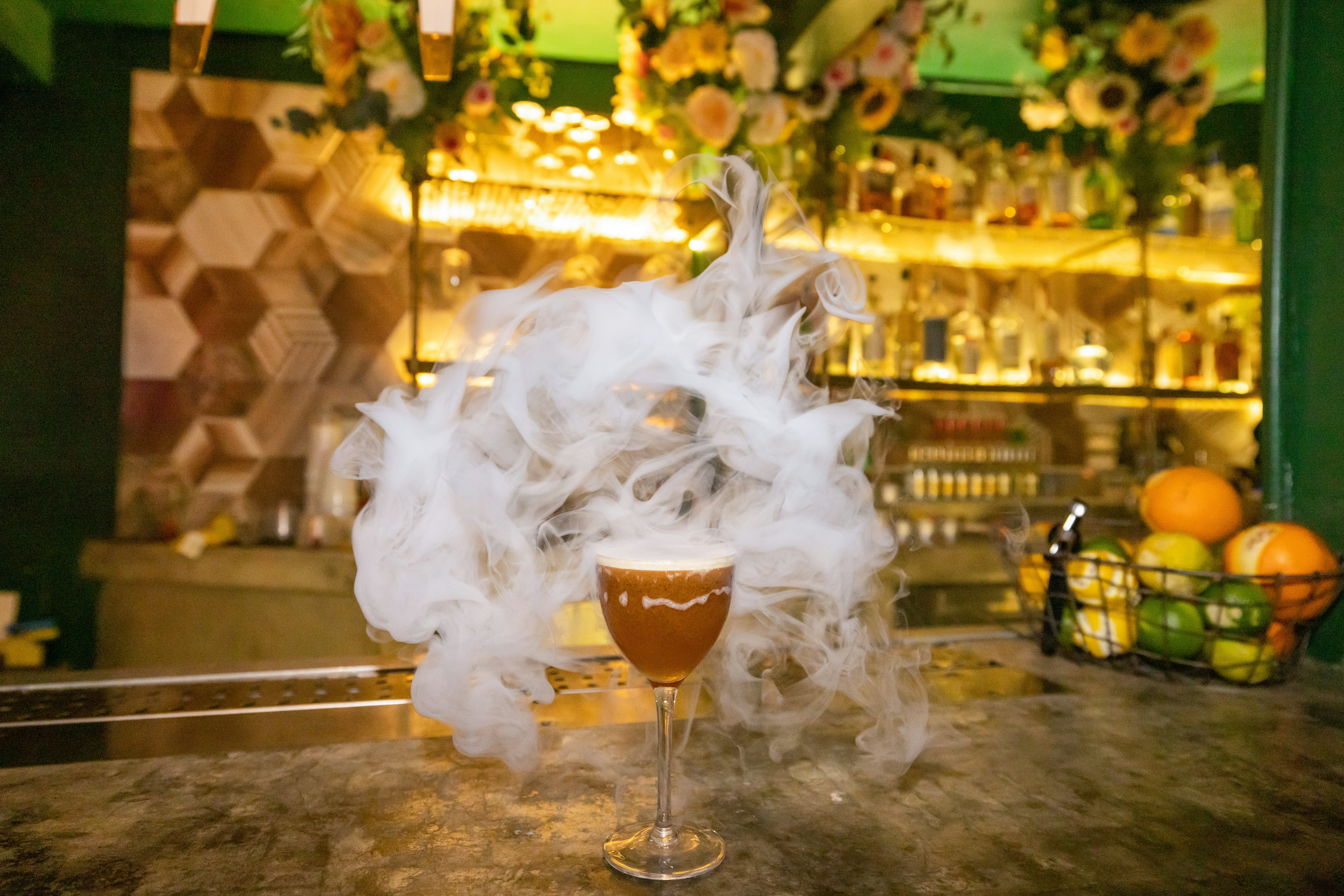
Over in Isla Verde, the colorful and conceptual cocktail bar Patio de las Flores has eye-catching drinks like the Salitre, served inside a conch shell. If you’re willing to venture further afield, Tetas by Karla Z in Cayey is worth the trip. Try the refreshing Cubo Blanco, somewhere between a limber (Puerto Rican popsicle) and an old-fashioned made with St. Germain, or the stellar Mentira Blanca, a gin martini perfumed with rosemary and lime.

Sip single-origin coffee at the haciendas of the central mountains
Coffee is a staple of everyday life in Puerto Rico and the Island takes its coffee culture very seriously. Puerto Rican coffee has unique and delicious flavors, from bright and fruity to deep and chocolatey. The microclimate in the central highlands is ideal for coffee with its volcanic soils, higher altitudes, and cooler temperatures. Here, many small farms produce high quality single-origin coffee, meaning the beans come from one location and are not mixed with beans from other countries or even other farms.

Meander through the mountains and you’ll find gorgeous coffee plantations that harvest, hand pick, sun-dry, and roast their own coffee. Two hours’ drive from San Juan is Café Hacienda San Pedro in Jayuya, where you can grab a bite and a coffee at the cafe, tour the historic coffee museum upstairs, take in the view from a rocking chair by the pond, or shop for local produce right from their 300-acre farm.

Just ten minutes down the road is Café Tres Picachos, a uniquely Instagram-able venue with its overly decorated suspension bridge, peacocks, antique carriage, and running water mill. For a more interactive experience, you can take guided coffee tours at Hacienda Muñoz in San Lorenzo or Sandra Farms in Adjuntas.
From traditional restaurants and creative roadside cafes to trendy bars, the thriving food scene of Puerto Rico has something to offer for every palate. Come discover some of this Island's best eats.
Sponsored by Discover Puerto Rico
As a travel entertainment and inspirational media outlet, we sometimes incorporate brand sponsors into our efforts. This activity is clearly labeled across our platforms.
This story was crafted collaboratively between Discover Puerto Rico and Lonely Planet. Both parties provided research and curated content to produce this story. We disclose when information isn’t ours.
With sponsored content, both Lonely Planet and our brand partners have specific responsibilities:
-
Brand partner
Determines the concept, provides briefing, research material, and may provide feedback.
-
Lonely Planet
We provide expertise, firsthand insights, and verify with third-party sources when needed.











